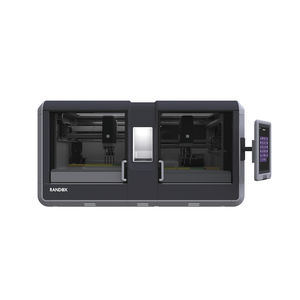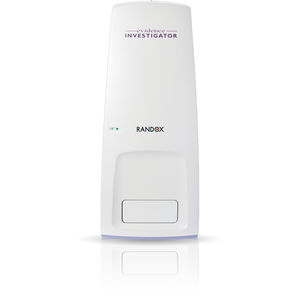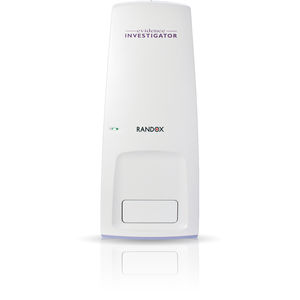
- Laboratory
- Laboratory medicine
- COVID-19 POC analyzer
- Randox Laboratories
COVID-19 POC analyzer EV4447for serologyfor antibodiesprotein
Add to favorites
Compare this product
fo_shop_gate_exact_title
Characteristics
- Applications
- COVID-19
- Application field
- for serology
- Tested parameter
- for antibodies, protein, IgG
- Micro-organism
- SARS-COV-2
- Sample type
- cell, surface
Description
Maximum sensitivity is ensured through detection of antibodies against both proteins making the assay superior compared to other commercially available serology tests where false negative results may occur. Measurement of both RBD and NP IgG antibodies also provides an opportunity to discriminate vaccinated versus naturally infected individuals. Spike is one of the major vaccine targets against SARS-CoV-2 with antibodies against Spike RBD correlating well with protection while Nucleocapsid is an immunodominant protein expressed with high immunogenicity during the early stages of SARS-CoV-2 infection.
Highly sensitive and specific serological assays are crucial for surveillance, to help uncover the burden of disease and to get accurate estimates of morbidity and mortality associated with SARS-CoV-2. Serological assays are also required to evaluate immunological response at an individual/population level and during vaccine trials.
Crucially, simultaneous measurement of antibodies to RBD and NP provides a tool to monitor breakthrough SARS-CoV-2 infection in vaccinated individuals. This testing approach has wider societal implications in the context of measuring ongoing vaccine effectiveness against evolving SARS-CoV-2 variants such as the Delta variant.
The S protein consisting of S1 and S2 subunits is located on the surface of the SARS-CoV-2 virus making it highly immunogenic. The S protein plays an important role in viral attachment, fusion and entry to the host cell, as such it serves as a target for the development of antibodies, entry inhibitors and vaccines. The Receptor Binding Domain (RBD) located on the S1 subunit is the key target for neutralising antibodies.
Catalogs
No catalogs are available for this product.
See all of Randox Laboratories‘s catalogsExhibitions
Meet this supplier at the following exhibition(s):


Related Searches
- RANDOX test kit
- RANDOX solution reagent
- Blood assay kit
- RANDOX molecular biology reagent
- RANDOX research reagent
- RANDOX diagnostic reagent
- RANDOX laboratory reagent
- RANDOX protein reagent
- Immunoassay rapid diagnostic test
- Cassette rapid diagnostic test
- RANDOX molecular biology test kit
- RANDOX rapid virus test
- RANDOX enzyme reagent
- Whole blood detection kit
- Respiratory infection test kit
- Histology reagent kit
- RANDOX rapid infectious disease test
- Cassette assay kit
- RANDOX immunoanalysis reagent
- Cytology reagent kit
*Prices are pre-tax. They exclude delivery charges and customs duties and do not include additional charges for installation or activation options. Prices are indicative only and may vary by country, with changes to the cost of raw materials and exchange rates.













